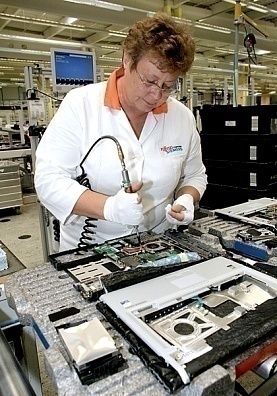How to Build a Custom PC
How to build a custom PC ultimately depends on your overall working experience with computer hardware and specifications; as well as the budget you have allocated for this type of project.
Most folks who desire to build their own custom PC are either seeking a powerful game machine, Computer-Aided Drafting (CAD) machine, or high end multimedia production editing bay.
If this is the case, the best independent component investments to take into strong consideration are:
- As much RAM as permissible (factory matched pairs, in all cases, to avoid RAM ‘bottleneck’ headaches);
- A dedicated video card (ideally, with expandable RAM slots of it’s own);
- Overly-sufficient power supply (for device expansion without worrying about power supply overload).
The single most important factor that will determine the above is the software you plan on running.
As a general rule of thumb, it is highly recommended to take the “greediest” hardware retirements from each application you intend on running regularly.
You especially want to note the ‘recommend’ CPU, RAM, video, audio, and other hardware requirements.
Custom PC System Design Overkill
The system you design should allow for at least a 3:2 overkill ratio, with 2:1 being ideal.
What this basically means, is that you will want to take the largest single minimum hardware requirement (i.e. CPU, RAM, etc.) for each and every one of your most resource-intensive software titles.
Write each of these requirements down, and put an asterisk beside the application with the most amount of each. This is your custom built PC specifications rough-draft.
The closer you can get to investing in components with double the requirements (most especially in light of your CPU, as well as on-board and video RAM); the far more satisfied you will be with your finished system.
Plus, this allows you plenty of room to grow and continue to enjoy the latest software titles for a long time to come.
The Bare-Bones Custom PC Approach
By far the most economical approach to building your own custom PC, is by investing in a brand new “bare-bones” PC system that adequately covers your most critical applications; and continue building it up as finances permit.
A typical bare-bones PC system typically comprises of a computer chassis (case), power supply, Mother Board, CPU, RAM, hard drive, CD-Rom burner (and often times, DVD reader, as well).
The audio card, LAN card, and video card (shared memory) are typically already built on the Mother Board.
With nearly all bare-bones PC systems, the monitor and printer are obtained separately.
The Custom-Built from “Scratch” Approach
The other viable option, though considerably costlier, gives you complete control over the design spec’s your custom-built PC system needs to comfortably accommodate.
If you’d rather go with this option, you will need to supply literally everything, including a case with power supply, desired Mother Board and CPU, RAM, as well as the video, audio, modem (if needed) and LAN card.
You would start by looking into suitable Mother Boards and determine which one would fit your needs. You will want to take into account which CPU’s and RAM types the Mother Board is compatible with.
Also, keep in mind the types of computer cases the Mother Board can be mounted in, and its overall max RAM potential.
Once you have chosen the desired Mother Board, CPU, RAM, case, peripheral cards (i.e. Audio, etc.); you’ll then want to acquire a keyboard, mouse, monitor, and anti-static wrist strap (readily available at most computer stores, Radio Shacks, etc.).
If you have never performed this type work before, it is highly advised that you solicit the aid of someone who has built and upgraded sever dozens of computer systems.
There are only a very few right ways and countless numerous wrong ways to go about building a custom PC system.
Preliminary Tips for Buildinga Custom PC
- Under all circumstances, it is recommended that the power cord between the power supply and AC mains is completely disconnected (even if the computer is fully powered down);
- Always maintain a solid ground via a wrist strap (clip to the computer’s case- directly to metal, not plastic);
- When moving parts around, unprotected (which is inevitable when building a custom PC system); it is extremely wise to have already laid out a completely anti-static surface laid out near your work area.
Though the anti-static bag that the Mother Board came in can work in a pinch; even better is to take a decent length of aluminum foil, and lay it out.
Provided you are wearing a grounding strap clipped somewhere along your computer’s chassis, then the both your components and foil will always remain static-free.
Others Guides to Building a Custom PC
How to Build a Computer
Today, it is easier than ever to build your own computer. Whether you are a computer programmer, technical engineer or a homemaker, building your computer from scratch can be accomplished in a reasonable amount of time and at affordable prices.


Comments - One Response to “How to Build a Custom PC”
Sorry but comments are closed at this time.